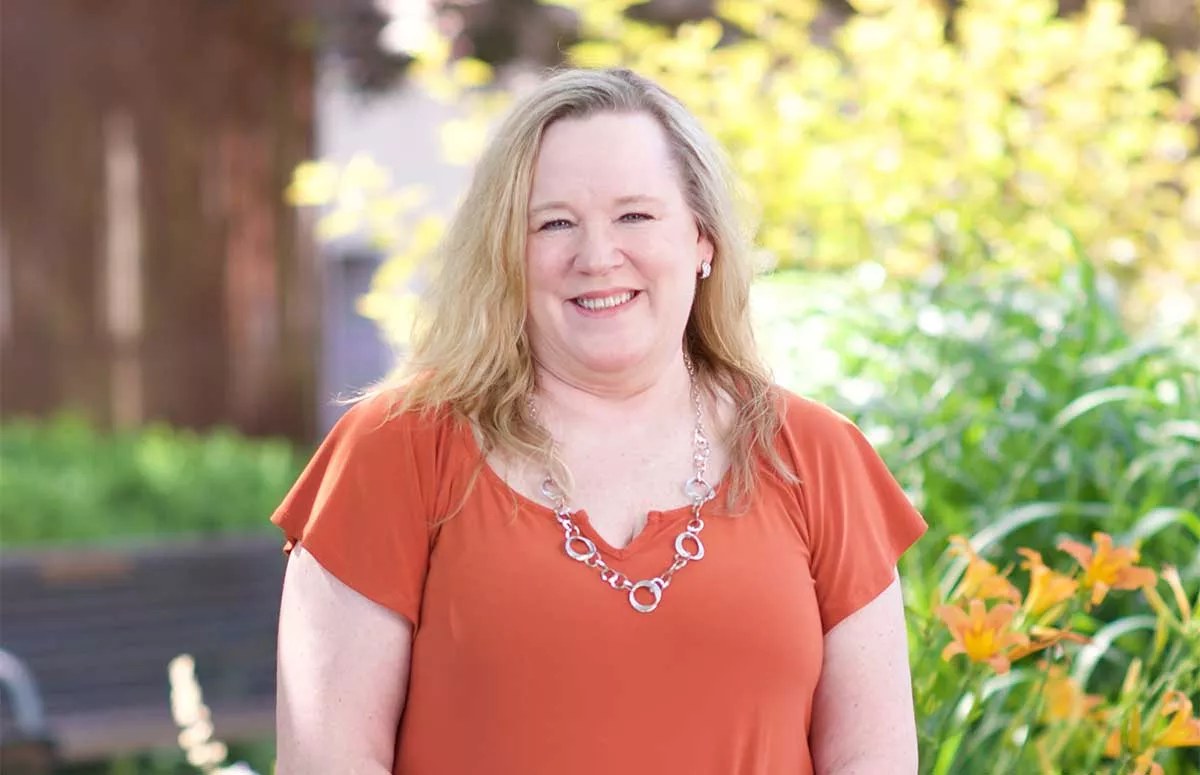Oncoplastic surgery a good option for some breast cancer patients

DCIS – ductal carcinoma in situ – is one of the most common and most easily treated forms of breast cancer. It often shows up as calcifications on a mammogram, rather than a mass, and typically is treated with a lumpectomy, possibly followed by radiation and hormonal therapy.
Sabra Petersen, 55, of Camanche, Iowa, was diagnosed with DCIS in her right breast in March 2015 and had a lumpectomy to remove the calcifications. When the tissue was tested, however, doctors learned the cancer went to the edge of the tissue—there were no cancer-free margins.
“With those results, you know that you might have left some behind,” says Ingrid Lizarraga, MBBS, breast oncology surgeon at University of Iowa Hospitals & Clinics and Holden Comprehensive Cancer Center.
Sabra had three options:
- Take a little more tissue, which would have likely left her breast misshapen and smaller than the left breast
- Undergo a mastectomy, which would have removed the breast
- Have oncoplastic surgery, a surgery to remove the remaining cancer tissue that would make the breast smaller, shape the affected breast so that it is not deformed, and then reduce the size of the unaffected breast to make the two breasts match
“The third option, which was a little different, would allow her to keep her breast—which is what she wanted—and would involve bringing in a plastic surgeon,” Lizarraga says.
“Oncoplastic surgery basically means that we are reducing the breast,” says Wei Chen, MD, a plastic and reconstructive surgeon formerly of UI Hospitals & Clinics. “We do breast reductions all the time, it’s one of the most commonly performed surgeries in plastic surgery. We remove tissue in the breast to reduce its size. With oncoplastic resection, we simply include the cancer in the tissue we remove.”
Oncoplastic resection isn’t an option for every woman, Chen says. Patients with smaller breasts aren’t good candidates because there is not a lot of tissue available. For larger-breasted women, however, it’s a good alternative.
“It’s a nice option for women who want to be able to save their breasts but who have to have a considerable amount of tissue taken,” Lizarraga says. “I could have gone back in and gotten a lot more tissue, but that breast wouldn’t look the same as the other.”
There are other benefits, too, Chen says.
“Not only are we maintaining the breast shape in both breasts, but we are enhancing the shape—the breast is also lifted in the process,” he says. “The benefits are also cosmetic—we’re improving the appearance and removing the cancer at the same time.”
Sabra, who had just lost her mother to breast cancer two years before her own diagnosis, was pleased with her own result.
“Everyone was wonderful in everything they did to take care of me, not only my physical health but my emotional well-being, too,” she says. “The doctors were very thorough in presenting all of the options and let me make the final decision and then respected that decision.”
It was the peace of mind she needed following her diagnosis. That March, her first thoughts weren’t about herself, or even about her cancer.
She was concerned about her family.
“I was devastated. We had just lost my mom to breast cancer about two years before I was diagnosed, so everyone had just gone through that with her,” Petersen says. “Now they were going to have to go through it with me.”
She also worried for her daughter and two sons—that the cancer might be genetic and they’d all be at risk in the future. Tests proved that wasn’t the case.
“My children have been a great support system,” she says. “They are a source of strength every mother should have, and I’m fortunate to have their support.”